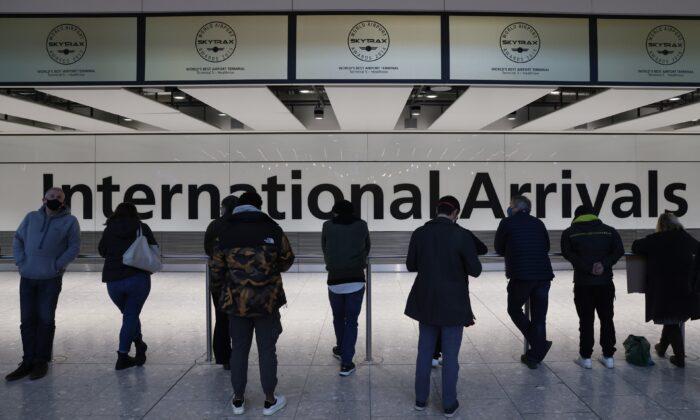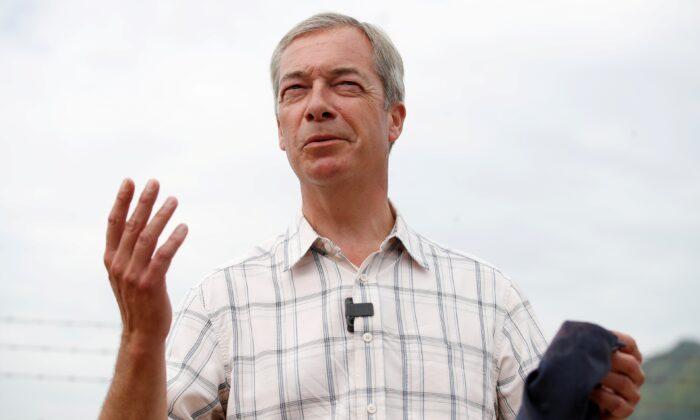Net migration to the UK hit a new record high of 606,000 last year, driven by people from non-EU countries arriving for work, study, and humanitarian reasons, according to official estimates.
The figure—released by the Office of National Statistics (ONS) on Thursday—marks a significant increase from 2021, when net migration stood at 488,000.
A total of 1.2 million people are likely to have migrated to the UK in 2022, while 557,000 are estimated to have migrated from the UK in the same period.
Jay Lindop, ONS director of the centre for international migration, said a series of “unprecedented world events throughout 2022,” together with the lifting of restrictions following the COVID-19 pandemic, led to record levels of international immigration to the UK.
‘Range of Different Factors’
Some 925,000 non-EU nationals are likely to have come to the UK during the whole of 2022, compared with 263,000 who left the country.Meanwhile, more EU nationals are estimated to have left the UK (202,000) than arrived (151,000).
People arriving on study-related visas accounted for the largest proportion (39 percent) of long-term immigration of non-EU nationals last year, at 361,000 people, up from 301,000 in 2021.
This increase is mainly attributed to people arriving as dependants, up from 41,000 in 2021 to 85,000 in 2022.
There is a “range of different factors” that may be influencing the increase in people arriving to study, including the new graduate visa route, where students can apply to work in the UK for up to three years after completing their studies, the ONS said.
The second-largest proportion of non-EU immigration in 2022 was people arriving on work-related visas (25 percent), at 235,000 people, up from 137,000 in 2021.
People coming to the UK on humanitarian routes, such as the Ukraine and Hong Kong resettlement schemes, accounted for 19 percent of non-EU immigration at 172,000 people, up year-on-year from 57,000.
‘Too High’
Commenting on the figures, the prime minister denied net migration is out of control, but acknowledged that it is “too high.”Rishi Sunak told ITV’s This Morning: “Numbers are too high, it’s as simple as that. And I want to bring them down.”
The Labour Party blamed the rise in net migration on the government’s alleged failure to tackle a skills shortage.
Shadow home secretary Yvette Cooper said: “These extraordinary figures, including doubling the number of work visas since the pandemic, show the Conservatives have no plan and no grip on immigration.
“Ministers have completely failed to tackle skills shortages, especially in health and social care, or to get people back into work after COVID-19.”
Defending the government’s record, Immigration Minister Robert Jenrick told the House of Commons: “These particularly high figures are in large part due to temporary and exceptional factors” such as the humanitarian visa routes for Ukrainians and Hong Kong residents.
He said the government “remains committed to reducing overall net migration to sustainable levels.”
Jenrick said new plans announced earlier this week to tackle a rise in the number of foreign students bringing dependents to the UK would help reduce net migration, adding: “We expect this package to have a tangible impact on net migration. Taken together with the easing of temporary factors like our exceptional humanitarian offers, we expect net migration to fall to pre-pandemic levels in the medium term.”





